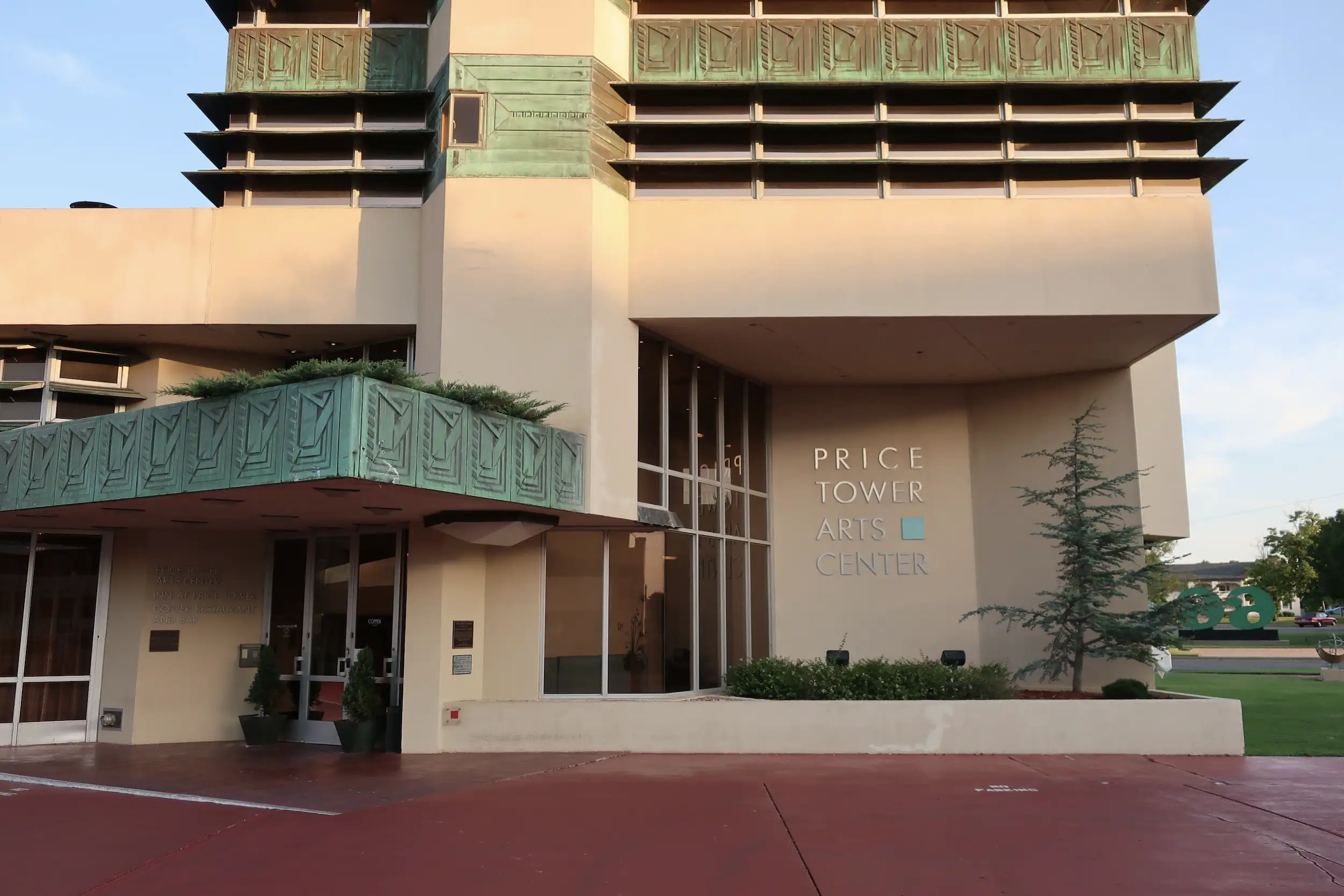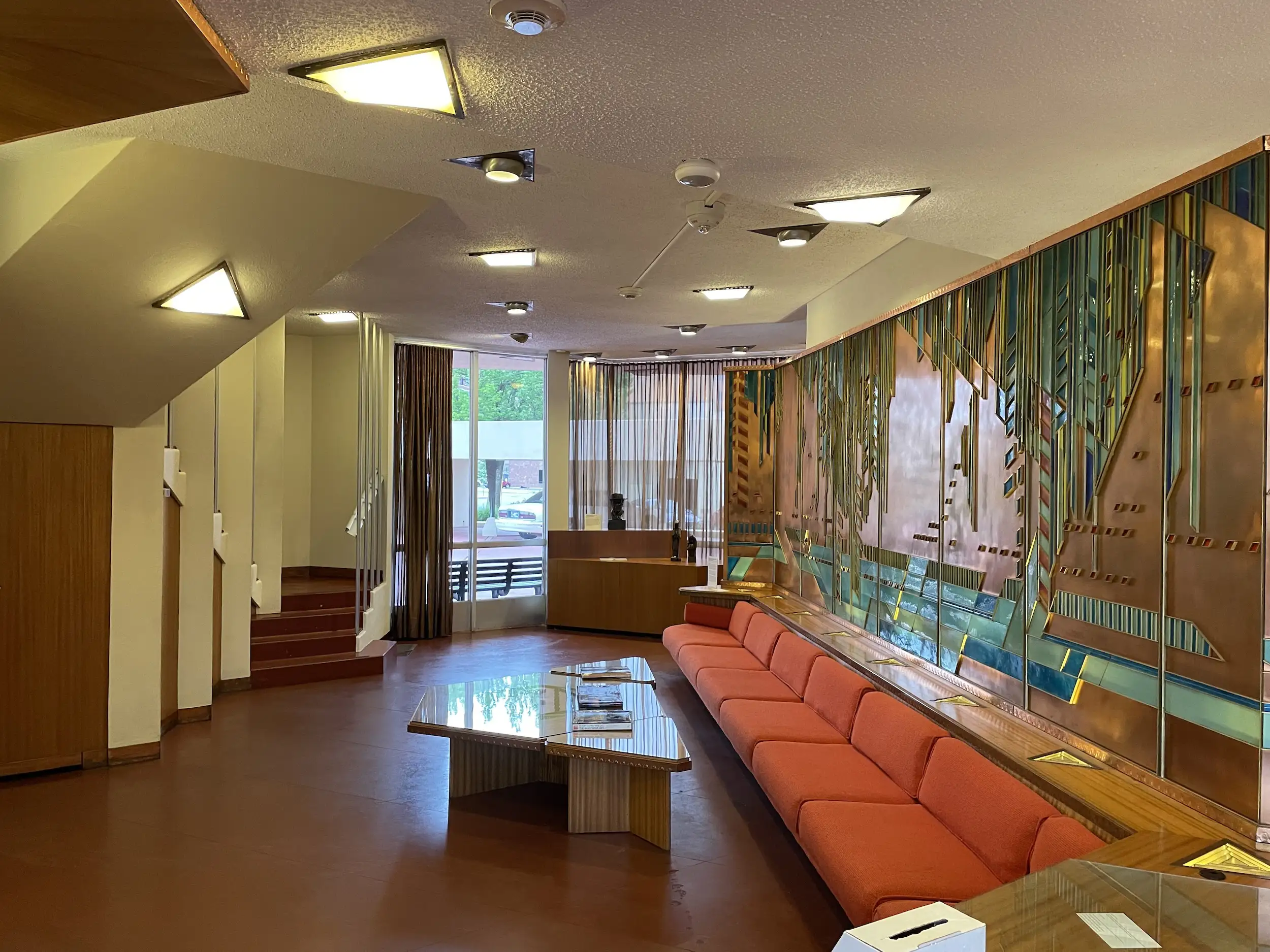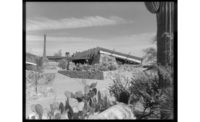Frank Lloyd Wright’s Price Tower in Oklahoma to Close Amid Controversy
The Price Tower (1956) in Bartlesville, Oklahoma. The mixed-use building is the taller of two completed high-rises designed by Frank Lloyd Wright. Listed on the National Register of Historic Places, it was declared a National Historic Landmark in 2007. Photo by John H. Waters, AIA, courtesy Frank Lloyd Wright Building Conservancy
Old-fashioned, historic preservation–related scandal has come to Bartlesville, a small city in northeast Oklahoma famously home to Frank Lloyd Wright’s Price Tower, a 19-story concrete and copper high-rise completed in 1956 that stands as the architect’s tallest habitable work. On August 9, the Bartlesville Examiner-Enterprise reported that the tower’s relatively new owners, Copper Tree Group, will close the National Historic Landmark–designated building on September 1 “amid financial chaos.” Per the newspaper’s reporting, the building is over $2 million in debt.
The move has left commercial tenants of the Price Tower scrambling to find new space and building employees without jobs, and raised the hackles of the Frank Lloyd Wright Building Conservancy, which has threatened legal action over the violation of a preservation easement that forbids the selling of certain protected items, including a trove of Wright–designed furnishings and art objects, without prior review or consent from the organization—even if building ownership is in dire financial straits.

The 19-story Price Tower is a major tourist attraction in Bartlesville. Photo by John H. Waters, AIA, courtesy Frank Lloyd Wright Building Conservancy
In a recent press statement, the Conservancy detailed how Copper Tree, who acquired the building from its former non-profit owner for $10 in March 2023, had removed easement-protected objects from Price Tower and sold them to a Dallas-based dealer of midcentury design earlier this year to help fund operations at the financially struggling building. Per the Conservancy, offloaded objects—all designed by Wright—include a rolling directory board, architectural copper relief panels, an armchair, and copper tables and stools. Gifted items designed by Oklahoman architect Bruce Goff housed at the tower were also reportedly removed and sold. In early July, the Conservancy sent legal communication to both Copper Tree and the dealer, demanding that the resale of the items cease and that they be returned. The statement notes that Copper Tree has not responded although the dealer, who is still in possession of the items, has been in communication.
“A preservation easement including the building and items in the collection was donated to the Conservancy in 2011 and is recorded with the property deed,” explains Conservancy executive director Barbara Gordon. “The owners have no right to sell protected items without our approval. This practice is not a sustainable way to fund the tower’s operations. It’s killing the goose that laid the golden egg! Once sold, items lose their direct connection to the tower and are no longer available for visitors and Bartlesville residents to appreciate.”

Adapted from his earlier, never-realized designs for a series of residential towers in Manhattan, Wright described the Price Tower as “the tree that escaped the crowded forest.” Photo by John H. Waters, AIA, courtesy Frank Lloyd Wright Building Conservancy
Rising 221 feet above downtown Bartlesville, Price Tower is one of only two high-rises designed by Wright alongside the shorter S.C. Johnson Wax Research Tower in Racine, Wisconsin. (While not technically a skyscraper by modern standards, the Price Tower is frequently described as such.) It’s also one of only three Wright-designed buildings in Oklahoma, which include the Richard Lloyd Jones House in Tulsa and Hillside, which was also commissioned by Bartlesville’s oil-rich Price Family.

Price Tower lobby, with original Wright furnishings. Photo by John H. Waters, AIA, courtesy Frank Lloyd Wright Building Conservancy
At its debut, the Price Tower was pointedly mixed-use and incorporated the corporate headquarters of the H.C. Price Company, whose business included pipeline construction, along with luxury apartment units and a variety of businesses, including retail shops and offices. Beginning in 1981, the tower was owned by Phillips Petroleum Company, who used it largely for storage purposes.
In 2000, Phillips donated the beloved local landmark to the non-profit Price Tower Arts Center, which revived the building and returned it to its multipurpose roots, opening a design gallery, restaurant, rentable office and retail spaces, and 21-room hotel named the Inn at Price Tower. All current businesses and attractions housed with the tower will close, at least temporarily, on September 1 if they haven’t already. (While still online, the hotel’s reservations page is currently “under maintenance.”) Previously booked tours of the building will reportedly be honored through the end of this week.
The closure marks the first time in its history that the Price Tower has been shuttered completely, save for a period in the early 2000s when it closed for renovations.
When asked by local news outlet NewsChannel 8 if there were plans to ultimately sell Price Tower and if the Conservancy had been made aware of this, Copper Tree CEO Cynthia Blanchard responded: “Well, it’s none of their business number one. Number two, if I have to I will.”


.jpg?height=200&t=1717782335&width=200)
